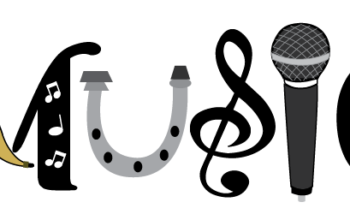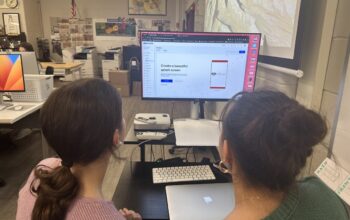Kate McMahon
Opinions Editor
@KateM_Courant
*Disclaimer* I am a hard core Garamond fan so if you are a hater I do not need your views (I am just kidding, I am just kidding please stay, all views are welcome) But seriously, my name is Kate and my font is Garamond. That’s my story .
But in all seriousness, with the ever-changing world these days certain things go unnoticed. For example, how do you tie your shoes? The bunny ears method or the basic knot? Which leg do you first put in your pants? Right? Left? Both? While these issues can single handedly match the importance of our national security or the monetary value of the Euro, there is only one issue with enough weight and meaning to keep me awake at night as I count the blades of my ceiling fan. So I just have one question for you, which font do you use?
Cambria? Helvetica? Times New Roman? There are so many fonts to choose from. Creating typeface is no easy task; there are technical complexities that are so minuscule you probably did not even know it was anybody’s concern. The space between characters, the width of each curve or line, the list goes on. So with all of this in mind, why am I head over heels in love with Garamond? It is a simple font, yet complex. It resembles handwriting and its strokes dip and dive with a crisp yet subtle nature.

But enough about me. Seriously, what font do you use? Let me break it down for you. If you use Helvetica, I hate to say it but you are boring. Get back on the factory line my friend, because you are just one from the typical mold. While Helvetica is the most versatile, it does not impress me. I guess it is cool because it is used in a plethora of logotypes, according to the Huffington post. For example: American Apparel, The New York subway system, Microsoft, Intel. But come on. I still give you a 6/10.
Moving on from the basic, we enter Times New Roman. Yawn. Sure, I will give you the readability aspect of the font and the overall classic feel. But, you clearly are not adventurous if you use the affectionately abbreviated font, TNR (I don’t think anyone abbreviates it. Maybe just me). Your mom probably packs your lunch and you are scared to ride a hoverboard. I cannot look at TNR without thinking it is a placeholder text, that you are either too lazy or don’t care enough about my feelings to replace it. It also makes me nervous; it is the typeface equivalent of a ticking clock. Lastly, if you use any version of a handwriting-ish font like Bradel Hand ITC or Papyrus, then you are squandering my time and yours. You are basically using Wingdings. You are a waste of space and using up the air on this earth. Be gone, peasant.
I think people forget about Garamond and all of its glory. My theory about this utter disregard for a great font is that it is overshadowed by the flawed science experiment done by 14-year-old Suvir Mirchandani. CNN did a story on this typeface hero who had just entered middle school when he noticed the exponential increase in worksheets and loose leaf compared to what he received in elementary school. This is where it began, a science fair project to promote “environmental sustainability”. You see, ink costs a pretty penny these days and for corporations and consumers that print page after page, cutting back on ink could really benefit all who are involved.
Suvir focused on the characters e, t, a, o, and r in order to see which font used the most ink for each character. He tested Garamond, Times New Roman, Century Gothic, and Comic Sans using an ink coverage software. After all the testing was completed, Suvir discovered that Garamond had noticeably thinner strokes. With this information he figured out that, “his school district could reduce its ink consumption by 24%, and in turn save as much as $21,000 annually.” He later published his findings in The Journal for Emerging Investigators (JEI), where high school and middle school students can submit their work and have it reviewed by graduate students.
After Suvir submitted his project, the editors at the JEI could see the real world application of his work and challenged Suvir to apply his idea on an even larger scale. Their suggestion was to take it to the federal government. The federal government spends $1.8 billion on printing, Suvir concluded that if the federal government used Garamond exclusively it could save nearly 30% on their ink expenditures.
This was good news in the Garamond fan club, because the font was finally receiving the respect it deserved and a 14 year old nerd was getting some heartwarming recognition. But, just at the peak of success came the inevitable fall, an all too untimely plot twist. Suvir’s findings were incorrect. Sigh. I wanted to believe you man, I really did. The issue in the study, was that Garamond’s letters are smaller at the same height as other fonts. Fastcodesign.com cites Type expert Thomas Phinney to provide some much needed clarifcation on this study. Phinney explains, “All 12-point fonts are not created equal. Garamond 12 is too small, and thus too hard to read at 12-points, so printers would likely opt for a larger size — which would end up costing basically the same amount as Times New Roman in 12-point.”
Suvir is only a teenager, and at age fourteen I was not making headlines so I still give the kid a slow clap for his diligence. On the upside, our typeface nerd Suvir will have a great college essay to write, something along the lines of: “My national headline and big break proved to be terribly incorrect, and I experienced failure on a national scale. So where do I go from here?” That is sure to be a good one, and heck Suvir, write it in Garamond.



